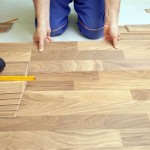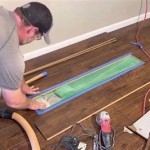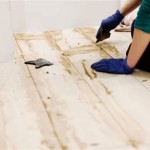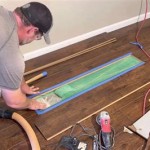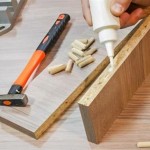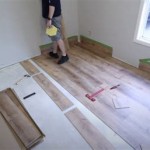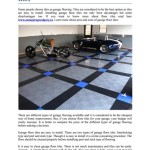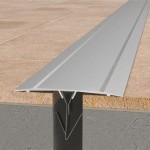How To Remove Linoleum Glue From Cement Floor Tiles In Bathroom
Removing linoleum glue from cement floor tiles in a bathroom can be a challenging task, especially if the adhesive has been in place for a significant period. The process requires patience, the right tools, and a methodical approach to avoid damaging the underlying cement tiles. Cement tiles, known for their durability and aesthetic appeal, can be porous and susceptible to staining or etching if harsh chemicals or abrasive techniques are used incorrectly. This article outlines several methods to effectively remove linoleum glue without compromising the integrity of the cement tiles.
Before commencing the removal process, it is crucial to understand the type of adhesive used. Older linoleum installations often utilized asbestos-containing adhesives, which pose significant health risks if disturbed. If there is any suspicion of asbestos, professional testing and abatement are mandatory. Assuming the adhesive is asbestos-free, the following steps and techniques can be employed to safely and effectively remove it.
Preparing the Work Area
Prior to starting the glue removal process, adequate preparation of the work area is essential. This involves ensuring proper ventilation, protecting surrounding surfaces, and gathering the necessary tools and materials. Good ventilation is paramount, particularly when using chemical solvents, as the fumes can be harmful. Open windows and doors, and consider using a fan to circulate air. Protect adjacent walls, baseboards, toilets, and other fixtures with plastic sheeting or drop cloths secured with painter's tape. This will prevent accidental splattering of solvents or scratching from tools.
Assemble the following tools and materials: a plastic scraper, a heat gun or hairdryer, mineral spirits or adhesive remover (ensure it is safe for cement tiles), a stiff-bristled brush (nylon or natural fiber), clean cloths or rags, safety glasses, gloves, and a dust mask. A putty knife or a razor scraper can also be useful for tackling stubborn adhesive residue. Having all the necessary materials readily available will streamline the removal process and minimize interruptions.
Perform a small test patch in an inconspicuous area of the cement tile to ascertain the compatibility of the chosen solvent or method. This will help to avoid potential discoloration, etching, or other damage to the tile's surface. Apply the solvent or heat to a small area, let it sit for the recommended time, and then attempt to remove the glue. Observe the tile closely for any adverse reactions before proceeding with the larger area.
Methods for Removing Linoleum Glue
Several methods can be employed to remove linoleum glue from cement floor tiles. The most effective approach often involves a combination of techniques, depending on the type and age of the adhesive, as well as the characteristics of the cement tile. Mechanical methods, such as scraping, can be effective for removing large chunks of glue, while chemical solvents are often necessary for dissolving stubborn residue. Heat can also be used to soften the glue, making it easier to remove.
1. Scraping: Begin by using a plastic scraper to remove as much of the linoleum glue as possible. A plastic scraper is preferred over a metal one to minimize the risk of scratching the cement tile surface. Hold the scraper at a low angle and apply firm, even pressure to lift the glue. For thicker deposits of glue, work in small sections and gradually chip away at the adhesive. If the glue is particularly hard, consider using a heat gun or hairdryer to soften it slightly before scraping. Be careful not to overheat the tile, as excessive heat can cause damage.
2. Heat Application: Applying heat can soften the linoleum glue, making it easier to scrape away. Use a heat gun or hairdryer on a low setting and direct the heat at the glue for a few seconds at a time. Avoid holding the heat source in one spot for too long, as this can overheat and damage the tile or the surrounding area. Once the glue has softened, use a plastic scraper to remove it. Repeat the process as necessary until the majority of the glue has been removed. Ensure the room is well-ventilated when using a heat gun or hairdryer.
3. Chemical Solvents: Chemical solvents can be effective for dissolving stubborn linoleum glue residue. Mineral spirits, adhesive removers specifically designed for flooring, and citrus-based solvents are all viable options. However, it is critical to choose a solvent that is compatible with cement tiles. Always test the solvent in an inconspicuous area first to ensure it does not cause discoloration, etching, or other damage. Apply the solvent to the glue residue according to the manufacturer's instructions. Allow the solvent to dwell for the recommended time to soften the adhesive. After the dwell time, use a stiff-bristled brush or a plastic scraper to remove the softened glue. Wipe the area with a clean cloth to remove any remaining solvent residue. Repeat the process as necessary until the glue is completely removed.
4. Vinegar Solution: White vinegar is a mild acid that can sometimes help to loosen linoleum glue. Mix equal parts white vinegar and warm water in a spray bottle. Spray the solution onto the glue residue and let it sit for 15-20 minutes. The vinegar can help to soften the glue, making it easier to scrape away. After the dwell time, use a plastic scraper or a stiff-bristled brush to remove the softened glue. Wipe the area with a clean, damp cloth to remove any remaining vinegar solution. This method is less aggressive than stronger chemical solvents and may be suitable for more delicate cement tiles.
Addressing Stubborn Glue Residue
In some cases, linoleum glue can be particularly stubborn and difficult to remove using the methods described above. If this occurs, there are several additional techniques that can be employed to tackle the residue. Using a combination of heat, chemical solvents, and abrasive tools may be necessary to achieve complete removal.
1. Razor Scraper: A razor scraper can be effective for removing thin layers of stubborn glue residue. Use caution when using a razor scraper, as it can easily scratch the cement tile surface if not handled properly. Hold the razor scraper at a low angle and apply gentle, even pressure to remove the glue. Work in small sections and avoid pressing too hard. Be sure to wear gloves to protect your hands from cuts. After using the razor scraper, clean the area thoroughly with a damp cloth to remove any loose debris.
2. Poultice Method: A poultice can be used to draw stubborn stains and residue out of porous cement tiles. Mix a paste of baking soda and water, or diatomaceous earth and water, to create a thick consistency. Apply the poultice to the glue residue and cover it with plastic wrap. Secure the plastic wrap with painter's tape and let the poultice sit for 24-48 hours. The poultice will absorb the glue residue over time. After the dwell time, remove the plastic wrap and scrape away the poultice with a plastic scraper. Wipe the area with a clean, damp cloth to remove any remaining residue. Repeat the process as necessary until the glue is completely removed.
3. Professional Assistance: If all other methods fail, consider seeking professional assistance from a flooring contractor or a tile cleaning specialist. Professionals have access to specialized equipment and chemicals that can effectively remove stubborn linoleum glue without damaging the cement tiles. They also have the expertise to assess the situation and determine the most appropriate course of action. Hiring a professional may be the best option to ensure the job is done correctly and safely.
Cleaning and Sealing the Cement Tiles
After the linoleum glue has been completely removed, it is essential to thoroughly clean and seal the cement tiles to protect them from future stains and damage. Cleaning removes any remaining solvent residue or loose debris, while sealing helps to prevent water and other liquids from penetrating the porous surface of the tile.
1. Cleaning: Use a pH-neutral cleaner specifically designed for cement tiles to clean the floor. Avoid using acidic or alkaline cleaners, as these can damage the tile's surface. Follow the manufacturer's instructions for applying the cleaner. Use a soft-bristled brush or a sponge to scrub the tiles gently. Rinse the floor thoroughly with clean water to remove any remaining cleaner. Allow the floor to dry completely before proceeding to the sealing step.
2. Sealing: Sealing cement tiles is crucial to protect them from stains and moisture damage. Choose a penetrating sealer specifically designed for cement tiles. Apply the sealer according to the manufacturer's instructions. Typically, this involves applying a thin, even coat of sealer with a clean cloth or applicator pad. Allow the sealer to dwell for the recommended time. Wipe away any excess sealer with a clean cloth. Allow the sealer to cure completely before using the bathroom. Depending on the sealer, multiple coats may be necessary for adequate protection.
3. Maintenance: Regular maintenance is essential to keep cement tiles looking their best. Sweep or vacuum the floor regularly to remove dust and debris. Clean spills immediately to prevent staining. Use a pH-neutral cleaner for regular cleaning. Avoid using abrasive cleaners or scrub brushes, as these can damage the tile's surface. Reapply sealer periodically, as needed, to maintain the tile's protection. Following these maintenance tips will help to ensure that the cement tiles remain beautiful and durable for years to come.
Removing linoleum glue from bathroom cement floor tiles requires a deliberate and careful approach. By understanding the properties of the adhesive and the cement tiles, and by employing the appropriate tools and techniques, it is possible to successfully remove the glue without causing damage and to restore the tiles to their original beauty.

How To Finish Removing Linoleum Adhesive For Tile On Concrete Floor Hometalk

Removal How To Remove Old Vinyl Tiles Home Improvement Stack Exchange

How To Remove Vinyl Flooring Residue From Concrete Slab 3 Methods And They Work Or Don T

This Is The Easiest Way To Remove Linoleum Glue From Concrete Hometalk

How To Easily Remove Linoleum Houseful Of Handmade

How To Remove Old Vinyl Or Linoleum Flooring Kitchens And Bathrooms

How To Remove Linoleum Adhesive From A Concrete Floor

How To Remove Vinyl Or Linoleum Flooring Jonny Diy

How To Remove Vinyl Flooring Pvc Tiles Rolls From Concrete Slab

How Do I Remove Vinyl Glue Off Of Tile Flooring Home Improvement Stack Exchange
See Also
